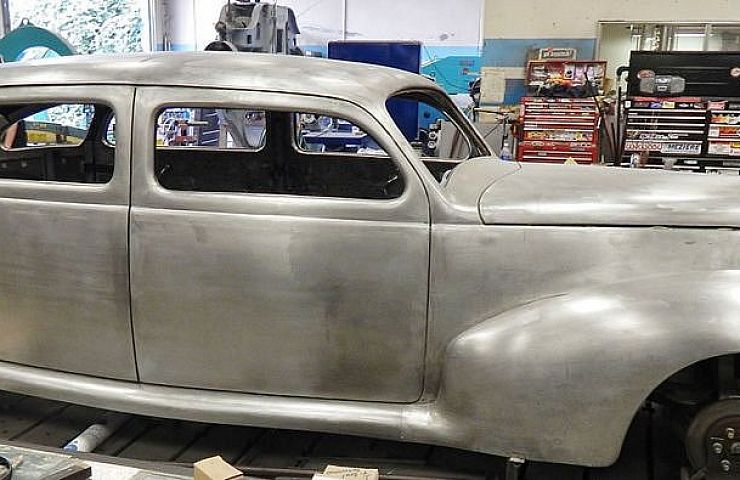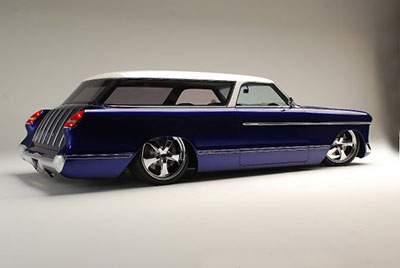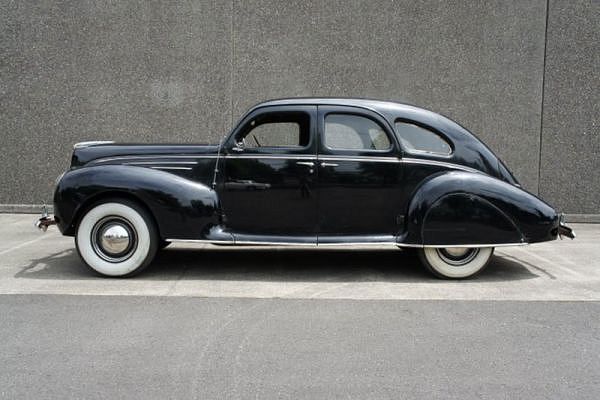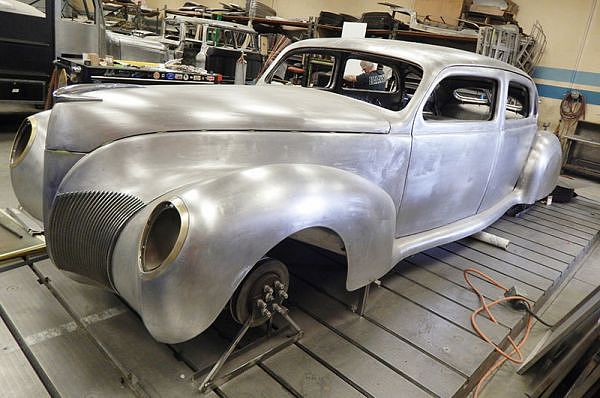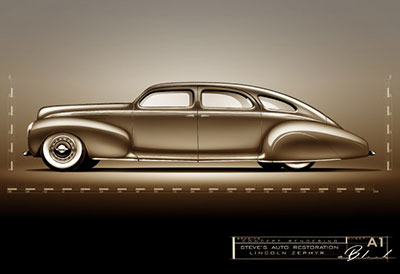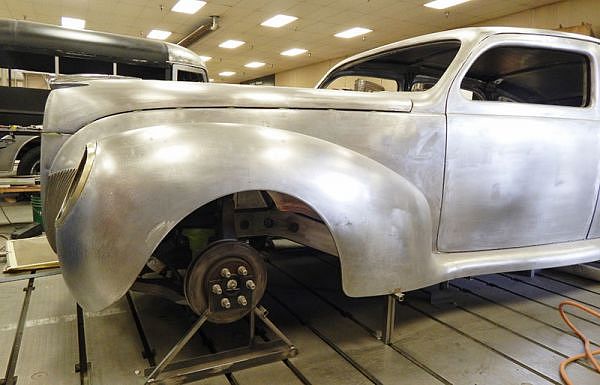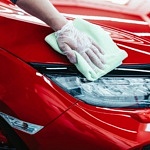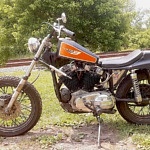Given the wide range of high-end automotive projects Steve’s Auto Restoration completed over the years, there’s only one word to describe Steve Frisbie and his restoration shop in Portland, Ore.: fearless.
A multi-faceted enterprise, Steve’s specializes in transforming automotive dreams into highly detailed show stoppers. Their list of accolades seem endless—from Builder of the Year at the Grand National Roadster Show, to winning project cars at the Detroit Autorama and the Forest Grove Concours d’ Elegance. Past creations include:
- Chevy Nomad-based customs “RealMad” (designed by Chip Foose)
- “NEWMAD” (Chris Ito design)
- “Baron Von Kuhl” 1937 Ford
- Full restoration of the historic Ron Dunn 1950 Ford custom coupe
Sleek Electric Zephyr
One of their current projects is sure to earn additional acclaim for Steve’s Auto Restoration: a stretched 1939 Lincoln Zephyr that will feature an all-electric drivetrain. The basis of the design was to accentuate the already long, sleek lines of the Zephyr by making it even longer and sleeker.
Making this Zephyr even more unique is that it is being engineered to accommodate a 218-horsepower Siemens 5135 electric drivetrain and battery pack. When ready, the partially-completed car will be shipped to a facility where technicians will install these advanced electric drivetrain components. Once that operation is accomplished, the project will return to SAR for paint, interior and final assembly.
The client’s dream began with the disassembly of a well-preserved Zephyr four-door sedan. With the help of a second donor Lincoln, the car was lengthened nearly 40-inches and widened at the “B” pillar another 8 inches. A further design evaluation determined that it would be necessary to chop the roof, which resulted in even more extensive metal-shaping.
Additional modifications include welded-on fenders and trunk, widened grille, rain gutter removal, reformed rear window and hidden door hinges. The bumpers, cowl vent and lower door portions were removed. These modifications made it necessary to mount the body on a surface plate to ensure complete accuracy in the alteration process.
Because of an estimated finished weight of over 6,000 pounds combined with the additional length, the car rests on a custom chassis that utilizes Ford F150 pickup suspension components.
The finished project may well pioneer a new age of more environmentally-oriented customs and street rods utilizing today’s evolving full electric or hybrid technology.
Another example of Frisbie’s experience came when he established “Real Steel,” a division dedicated to the stamping and assembly of 1933 and 1934 Ford Roadster bodies and replacement sheet-metal parts. All dies used in the stamping process are owned by Steve’s to ensure solidarity and quality control. Replacement panels are available separately, but Real Steel specializes in building the bodies to order in-house. Customers for these products range world-wide.
To further explore the shop’s past and current projects, visit www.realsteel.com.

